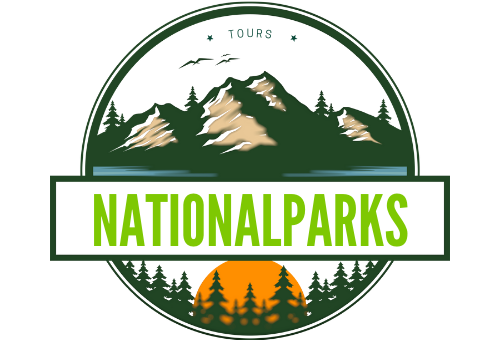Zion National Park served as a refuge for pioneers due to its unique geological features, water sources, and natural shelters. The park’s diverse landscape, carved by the Virgin River, offered a rare combination of fertile land, reliable water, and protective terrain. This made it an attractive settlement area for Mormon pioneers in the late 1800s, despite the challenges of desert living.
What Made Zion’s Geology Suitable for Pioneer Settlement?

Zion National Park’s geological composition played a crucial role in making it a viable refuge for pioneers. The park’s landscape is primarily composed of:
- Navajo Sandstone
- Kayenta Formation
- Moenave Formation
- Temple Cap Formation
These rock formations created a diverse terrain of deep canyons, towering cliffs, and monoliths. The Navajo Sandstone, in particular, is significant for several reasons:
- It forms the highest exposures in the park, such as West Temple and Checkerboard Mesa
- Its porous nature contributes to the formation of springs
- When combined with the underlying non-porous Kayenta Formation, it channels water to create reliable water sources
The geological features provided natural shelters, defensive positions, and a foundation for agriculture, all of which were crucial for pioneer survival.
How Did the Canyon’s Elevation Benefit Pioneers?

The canyon floor’s elevation range, spanning from approximately 3,700 to 8,700 feet, offered several advantages to pioneers:
- Wide, level areas suitable for crop cultivation
- Access to the Virgin River for irrigation
- A growing season long enough to sustain crops
- Diverse ecosystem supporting a variety of plants and animals
This unique combination of factors in a desert environment made Zion an attractive location for settlement, despite the inherent challenges of the region.
What Role Did Water Sources Play in Pioneer Refuge?
Water availability was paramount for pioneer survival in the arid landscape of Zion. The park offered two primary water sources:
- The Virgin River
- Natural springs
The Virgin River
The Virgin River was the lifeblood of pioneer settlements in Zion. It provided:
- Water for irrigation of crops
- A reliable source for domestic use
- A means of transportation and navigation through the canyon
Natural Springs
The park’s geology created numerous springs, such as Weeping Rock. These springs formed when:
- Water percolated through the porous Navajo Sandstone
- It was then channeled by the underlying, less permeable Kayenta Formation
- The water emerged as springs at various points in the canyon
These springs offered consistent water sources, crucial for sustaining life in the desert environment.
How Did Natural Shelters Protect Pioneers?
Zion’s landscape provided numerous natural shelters that were invaluable to early settlers:
| Natural Feature | Protection Offered |
|---|---|
| Deep Canyons | Shelter from harsh weather and potential threats |
| Overhanging Cliffs | Protection from sun and rain |
| Caves | Natural dwellings and storage areas |
| Rock Overhangs | Temporary shelters and gathering places |
Iconic formations like the Great White Throne and the Temple of Sinawava served as natural barriers, offering protection and strategic advantages to the pioneers.
What Were the Pioneer Settlement Patterns in Zion?
Pioneer settlement in Zion began in the late 1800s, primarily by Mormon settlers. Key settlement milestones include:
- 1862: Founding of Springdale, just outside Zion Canyon
- 1863: Construction of the first homestead by Isaac Behunin near present-day Zion Lodge
Settlers were drawn to the area’s agricultural potential, despite challenges such as:
- Flash flooding
- Crop-burning droughts
- Poor soil quality in some areas
The pioneers adapted to these challenges by:
- Utilizing natural flood plains for farming
- Developing irrigation systems from the Virgin River
- Constructing homes and structures using local materials
What Historical Data Supports Zion’s Role as a Pioneer Refuge?
Historical data and measurements provide insight into why Zion served as an effective refuge:
-
Erosion Rate: The Virgin River carved approximately 1,300 feet of sediment in about 1 million years, creating a deep, navigable canyon.
-
Biodiversity: The varied elevation and unique geology supported a diverse ecosystem, providing resources for pioneers.
-
Agricultural Evidence: Remnants of pioneer farms and orchards can still be seen in parts of the park.
-
Settlement Records: Historical documents detail the establishment of communities like Springdale and the construction of early homesteads.
-
Geological Surveys: Early surveys highlight the unique features that made Zion attractive for settlement, such as its water sources and natural shelters.
How Did Zion’s Challenges Shape Pioneer Life?
While Zion offered many advantages, pioneers faced significant challenges that shaped their lives:
-
Periodic Flooding: The Virgin River’s propensity for flash floods required settlers to adapt their farming and building practices.
-
Soil Quality: Poor soil in some areas necessitated careful crop selection and farming techniques.
-
Extreme Weather: The desert climate, with its hot summers and cold winters, demanded resilience and adaptability.
-
Isolation: The remote location meant limited access to supplies and outside assistance.
-
Wildlife Conflicts: Encounters with native wildlife required pioneers to develop strategies for protecting livestock and crops.
Despite these challenges, the unique features of Zion National Park provided enough advantages to make it a viable refuge for pioneers. The combination of water sources, natural shelters, and diverse ecosystems allowed settlers to establish communities and thrive in an otherwise harsh desert environment.
References:
1. U.S. National Park Service – Geology of Zion National Park
2. U.S. National Park Service – People of Zion National Park
3. UtahGeology – The Geology of Zion National Park
